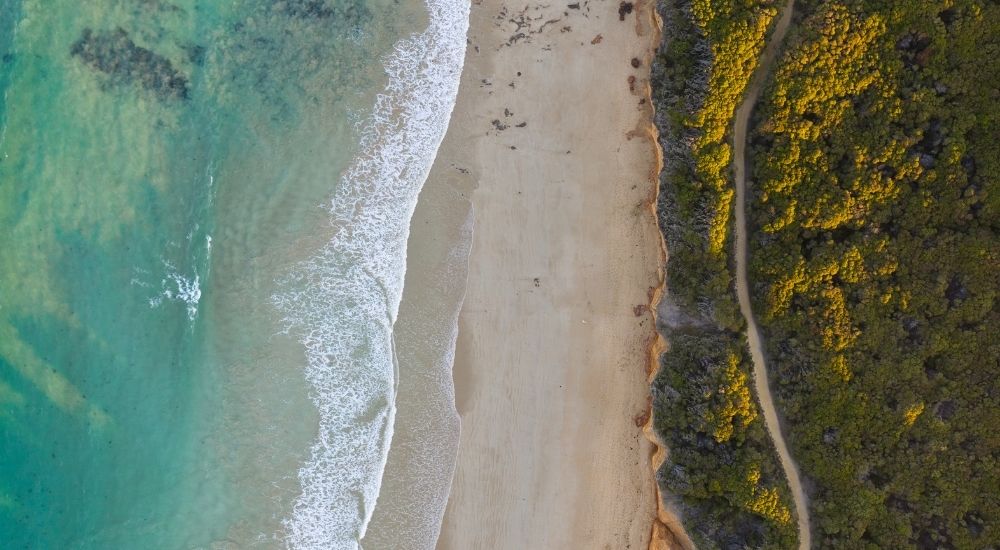The Great Ocean Road beaches are some of Australia’s best wild and unspoilt beaches. The coast consists of a string of rock-fringed, rugged sandy beaches, perfect for long walks and surfing. Read on to discover what makes each beach special. Please note – many of these beaches are treacherous and are not patrolled by surf lifesaving.
Beaches from Torquay to Lorne
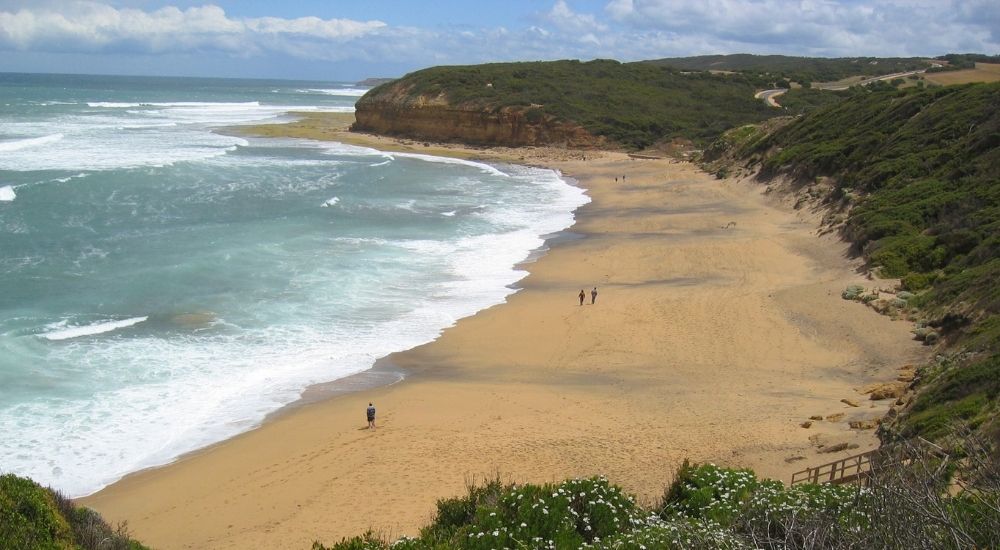
Bells Beach
Iconic Bells Beach is known internationally as one of the best surf beaches in Australia, with breathtaking views from the cliff-top car park and several great surf breaks. To access Bells Beach turn onto Bells Boulevard close to Jan Juc, and the route is clearly signposted from then on. Each Easter, Bells Beach is the venue for the international Rip Curl Pro event and as the name suggests, if you’re a new surfer it is best approached with caution.
Point Addis
Point Addis is relatively sheltered, thanks to the surrounding limestone and sandstone cliffs. The surf is consistent with varying winds, swells and tides, so many surfing novices perfect their art there. The beach is part of Point Addis National Park, and there is a gravel car park with viewing platform. Visitors should note that nearby Southside Beach has a clothing optional policy.
Anglesea Beach
Anglesea is ideal for those who want to catch the surf and stay safe as there is a surf lifesaving service in summer. This popular seaside destination has sprawling sandy beaches and shallow waters at the mouth of the Anglesea River. The beach is within easy walking distance of cafes and restaurants and there is also a play ground and toilet facilities nearby.
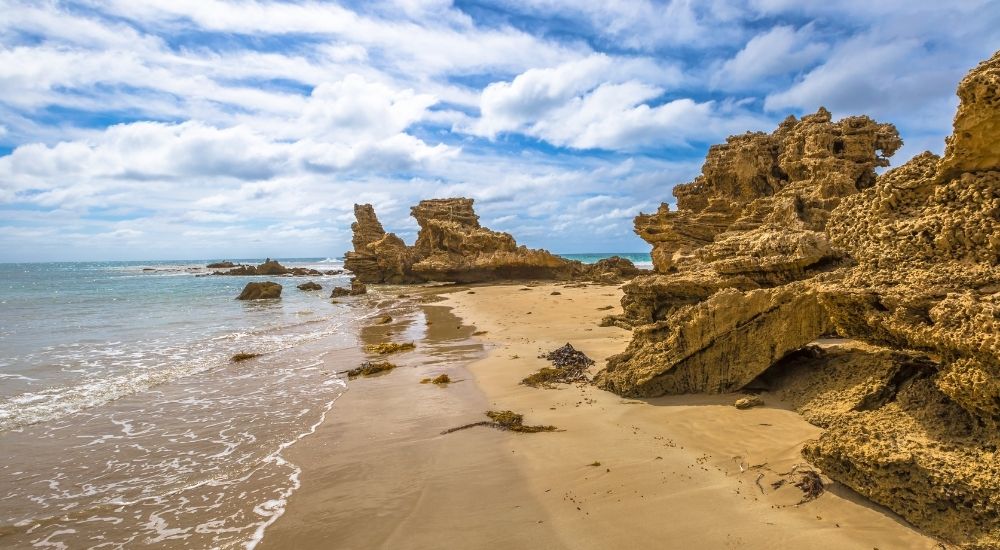
Point Roadknight
Perfect for families, Point Roadknight as it has the safest swimming conditions in the area, with lifeguard patrol during the Christmas holidays. Surf is fairly flat, however at low tide the shallow waters are great for splashing in with little kids. There is access via a car park at the rear of the beach and a beachside cafe serves coffee, snacks and icecream.
Urquhart’s Bluff
Just four kilometres from Point Roadknight is Urquhart’s Bluff, and it’s like a whole new world. This beach is far more hazardous due to permanent, persistent rips, and is popular with more experienced surfers and walkers. The beach lies close to the Great Ocean Road and there is a large car park and a public toilet. During low tide you can walk to the lighthouse at Airey’s Inlet. Urquahart’s Bluff is one of the best dog friendly beaches on the Great Ocean Road.
Fairhaven
Stretching 6 kilometres, picturesque Fairhaven beach is the longest beach on the Great Ocean Road and is suitable for experienced swimmers and surfers. At its western end you’ll also find the Great Ocean Road Memorial Arch, so for photographers this is one of the region’s best beaches to stop at on their road trip along Victoria’s southern coastline. If you want a dip in the water, the safest place to swim or surf is between the flags in front of the surf lifesaving club where the beach is patrolled in summer.
Beaches from Lorne to Apollo Bay
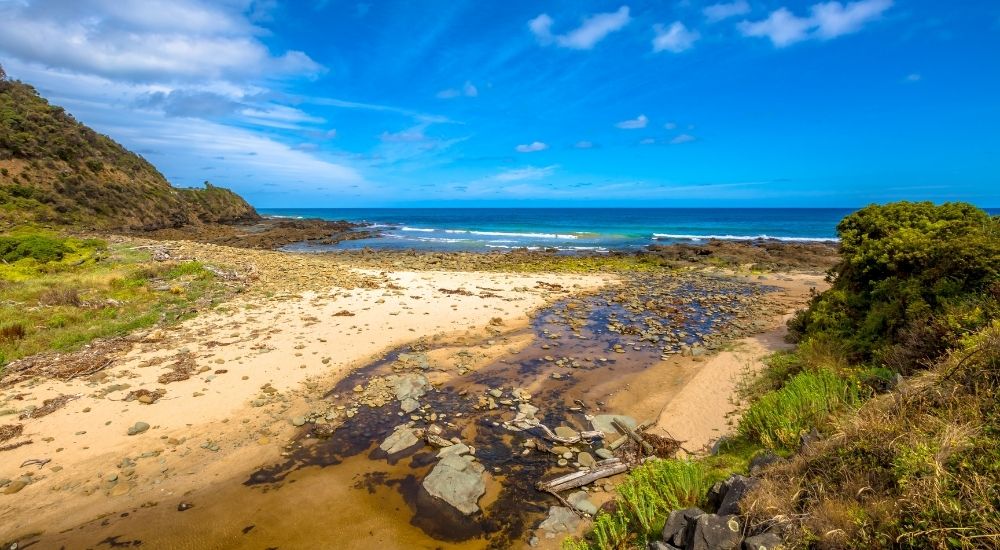
Lorne Beach
Lorne’s Main Beach comprises a sheltered, golden sandy cove that’s perfect for little ones to run around on. This is the only beach in town with surf lifesaving patrol. It’s popular with surfing beginners and is relatively safe for swimming. A foreshore reserve with ample parking, a pool, playground and trampoline park lies between the beach and main street.
Wye River and Separation Creek
Separation Creek occupies a sloped position right by the Great Ocean Road. The name applies to the settlement itself as well as the small creek that runs along the south side of the beach. This beach is hazardous due to permanent rips at both ends and boulders under the water. It’s a popular rock-pooling spot as the southern tidal pools are safe during low tide.
Kennett River
East facing Kennett River Beach is 200 metres long and moderately protected. The Great Ocean Road backs Kennett River beach, and there is a Surf Life Saving Club and car park are between the beach and the road. There are strong, permanent rips present, so although the beach is reasonably safe when patrolled it is very hazardous when there is any swell. Nevertheless this is a popular surf beach for those who are very experienced.
Apollo Bay
Of all the surf beaches on the Great Ocean Road, Apollo Bay is the most southerly. This 3 kilometre stretch of sand peaks in popularity during the summer holidays, and the southern end is safest for surfing and swimming. The weekly foreshore market on Saturdays is a big draw, selling arts, curios and crafts alongside fresh produce.
Beaches from Apollo Bay to Warrnambool
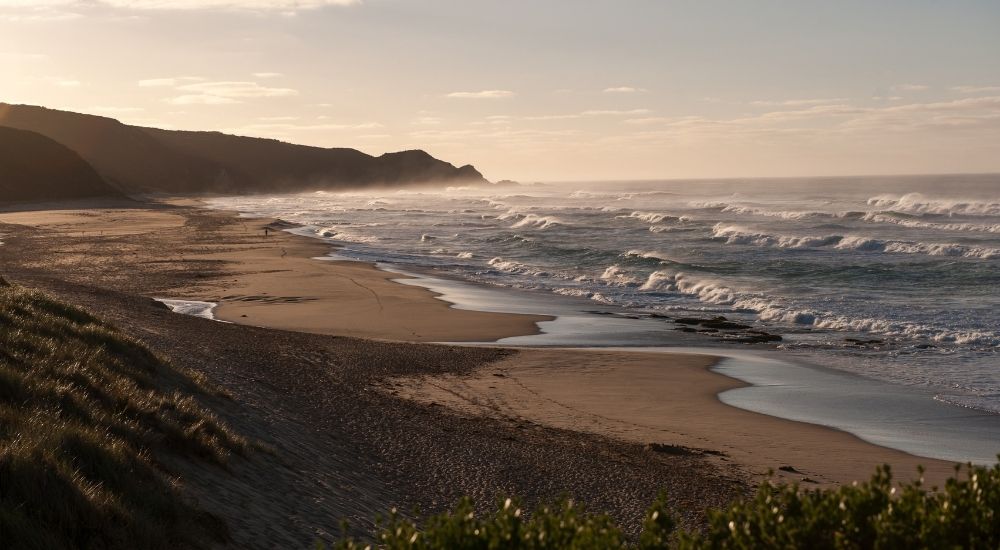
Blanket Bay
Blanket Bay is a little off the beaten track, used mainly by locals and campers. There is a basic campsite around 250 metres from where Blanket Bay Creek and the ocean join, as well as a number of fishing shacks. This beach has no lifesaving patrol, but is a relatively calm spot: the bay is often used for launching fishing boats.
Aire River
Another secluded spot for camping can be found at Aire River, although swimming is not advisable. Aire River is often used as starting point for hikes, particularly via spinifex forests to Johanna Beach. There are East and West campgrounds, and it is a popular spot for stand-up paddle boarding, canoeing and fishing.
Johanna Beach
Surfers who’ve hiked from Aire River will be glad to discover this superb surf beach. This rural farming spot is home to the best surf beach west of cape Otway, and the Bells Beach Surf Classic contest has sometimes been relocated here. This historic location has the oldest mainland light station in Australia, while dinosaur fossils have been uncovered in Glenaire Valley.
Wreck Beach
As the name suggests, visitors to Wreck Beach may be rewarded with views of shipwreck remains during low tide. The ship anchors in particular are extremely photogenic, although they cannot be reached at high tide. There is a car park 366 steps from the beach, reached via a gravel track from the Great Ocean Road’s ‘Moonlight Head’ turn-off.
Port Campbell
Port Campbell is a lively and colourful coastal village, with one of the safest beaches on this stretch of the coastline. A small bech with swells up to half a metre there are is a carpark and reserve that is a popular spot for picnics. You can pick up supplies at the cafes close by.
Logan’s Beach
If whale watching is on your bucket list, then Logan’s Beach in Warrnambool is the place to go during winter. Southern Right Whales have frequented Logan’s Beach in Warrnambool for centuries, and females return almost every year from June to September to calve. There is a viewing platform above the sand dunes which has a ramp, is free to use and is open all the time.
Which Great Ocean Road beaches will you stop at?
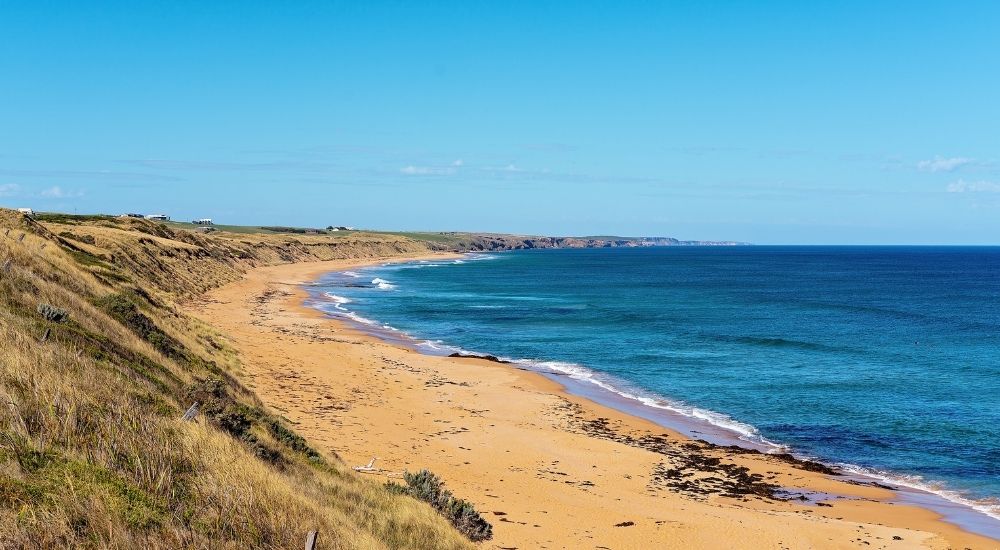
Which of the Great Ocean Road’s phenomenal beaches will you take a trip to? Surfy Bells or Johanna beaches, intriguing Wreck Beach, unspoilt Blanket Bay or family-friendly Lorne Main beach or Point Roadknight? From rock pooling at Separation Creek or whale-watching at Logan’s Beach, to gourmet dining in Port Campbell or browsing galleries in Anglesea, the beaches of the Great Ocean Road provide some of the most picturesque settings on the planet.

